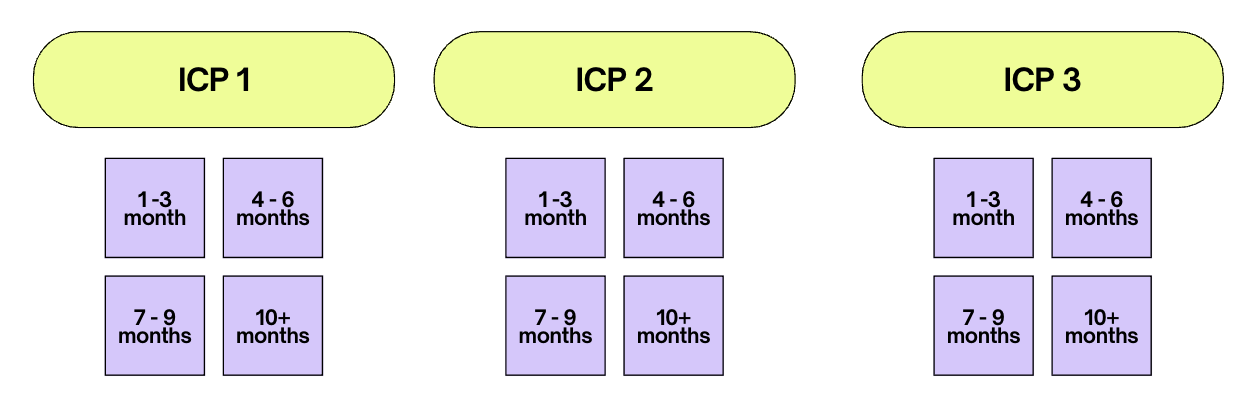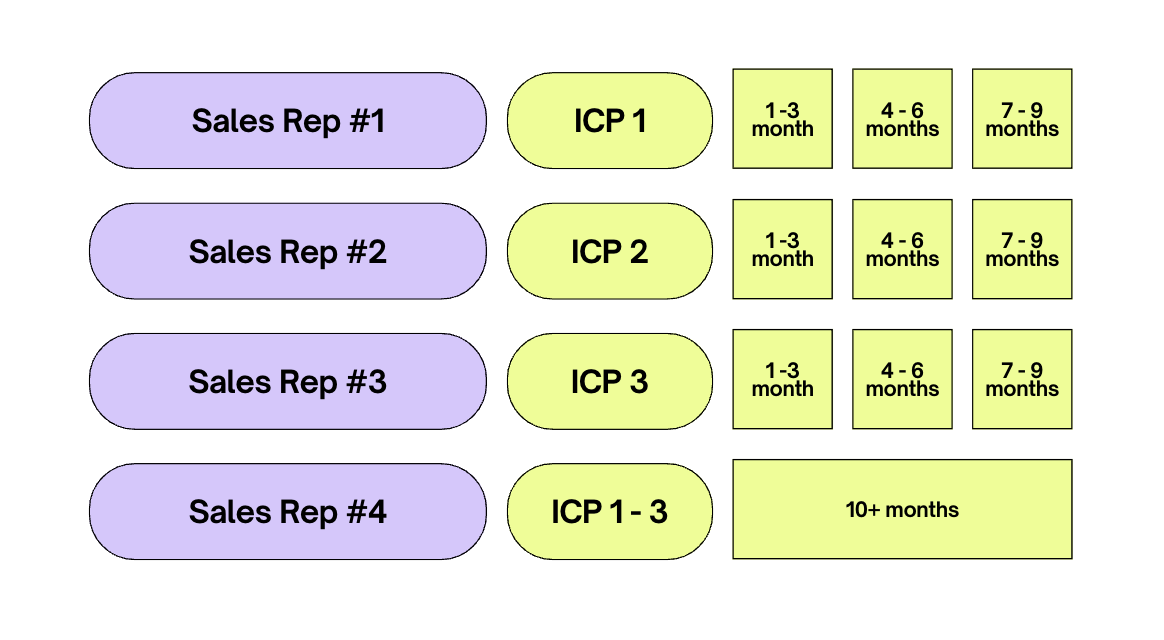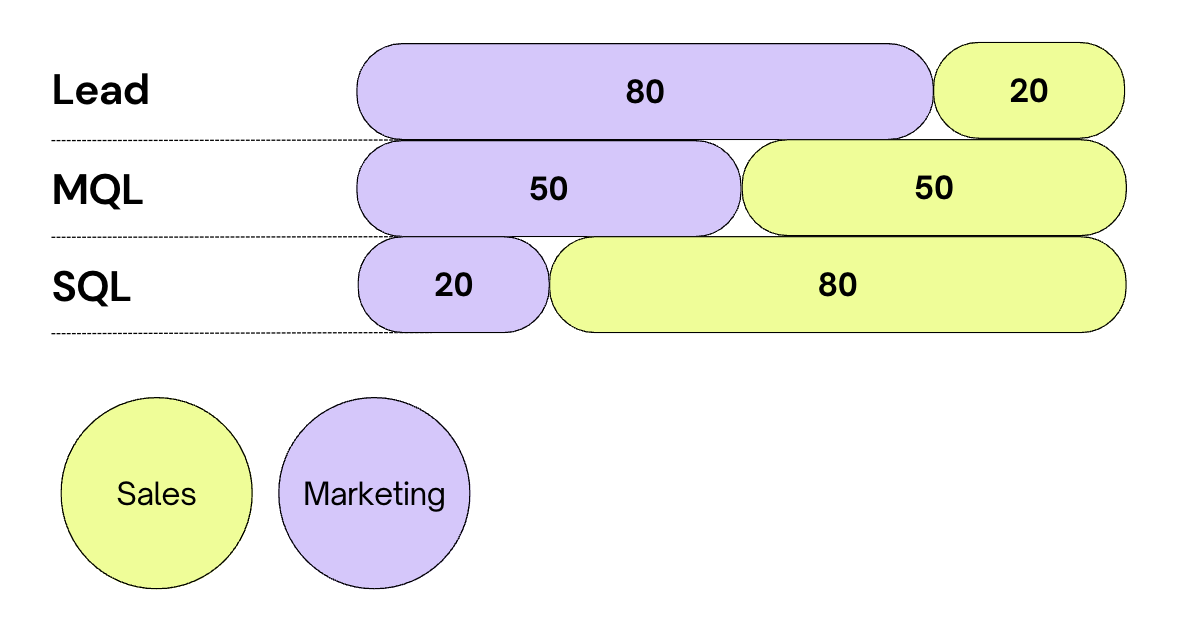Right now there are possibly thousands upon thousands of leads sitting in your customer relationship management (CRM) tool and collecting dust.
This is the reality for many business-to-business (B2B) startups as they focus on the next set of shiny leads that come through the pipeline.
Your B2B leads will go to waste unless you begin to create lapsed buckets and develop a strategy to attack them head-on. At my own startup, we leave no stone unturned and make sure that each lead that comes through the pipeline, even if it arrived 300 days prior, is still being contacted.
It’s possible to accomplish this goal, even with limited resources, by having automations and a complete strategy in place.
Start by creating your lead segments
With thousands of leads in a CRM, it can be overwhelming to even know where to start. Say hello to your lead segments. The most common ways to segment leads are by their recency and by how long they’ve been in your CRM. More on that in a moment.
First, here are a few other methods of bucketing to spark your ideation:
- Ideal customer persona (ICP).
- Company revenue.
- Company size.
- Lead stage.

Example buckets for lapsed leads. Image Credits: Jonathan Martinez
This illustration shows the use of ICPs and recency to create the bucketed segments. There are three ICPs with four recency buckets representing when the leads came in throughout the period of an entire year.
There isn’t one correct way to bucket leads, but it’s crucial to create these so that it makes reaching out more efficient.
Your B2B leads will go to waste unless you begin to create lapsed buckets and develop a strategy to attack them head-on.
At my own startup, we have a sales admin who works on assigning leads and monitoring the performance of every agent. If a particular agent isn’t hitting their touchpoints for the leads assigned to them, our sales admin is the first to alert them so they can get back on track. Having someone looking over the touchpoints to these leads will help to minimize future gaps.
Typically, when it comes to recency, the latest leads that came in will have the highest propensity to convert. This is why it’s fruitful to segment by the date leads came in so that different messaging, sales individuals and tactics can ultimately be used.
Assign lapsed leads to every sales rep on your team
After building more than 500 sales teams for startups via my own staffing business, I’ve witnessed firsthand nearly every sales structure and system known to man. When you have your buckets, the fun starts in assigning them to individual sales members on your team.
Every sales rep on your team should take on a specific portion of lapsed leads (i.e., ICP #1, 1–3 months). Imagine running a factory where every worker on the line had various tasks, from building to packaging to QA. It wouldn’t be the most efficient factory. It is the same case for a sales team handling various leads from all over the place.

Example lead distribution between four sales reps. Image Credits: Jonathan Martinez
In the setup above, each sales rep takes care of one product (or ICP) with a handful of recency buckets. The caveat is with the last sales rep taking care of the last recency bucket, which is generally the most challenging to convert.
Your strongest sales reps should be handling the warmest and most recent leads, as they have the highest probability to close and bring you that essential startup revenue. Beyond that, I would also ensure that you have touchpoint goals for each lead that’s in your CRM (i.e., two touchpoints per week).
If you’re running founder-led sales and don’t have a sales team to assign lapsed leads to, I’d highly recommend getting a sales assistant and having your automations buttoned up. A sales assistant should help with tasks such as setting appointments with your lapsed leads, rescheduling as needed and even sending follow-ups after the sales calls.
While it is not impossible to tackle all the lapsed leads as a founder running sales, it’s imperative to run tools that automate follow-ups to save precious time.
To close deals, sales and marketing must work in harmony
For optimal efficiency, it’s important to have sales and marketing working together to tackle the lapsed leads through a combination of mediums. I’ve seen too many startups with lead coverage that have gaps because the teams or buckets weren’t delineated from the start.
After determining which buckets each sales rep will take on, you can start to strategize how marketing will help support these efforts.
I’m not a fan of using leads, MQLs (marketing qualified leads) or SQLs (sales qualified leads) to determine when marketing or sales should jump in to take over. Instead, both sales and marketing teams should always be touching the leads. This is not to say that one team should be focused more on one bucket versus the other.
Here is an example of how these teams can work in harmony to support each other in closing deals:

Example work distribution between sales and marketing. Image Credits: Jonathan Martinez
Without going into detail on each of the tasks each department should do, I’ve created a distribution of work based on the lead stage.
Initially, marketing should be heavily involved in getting required info necessary to filter leads into MQLs — whether through site questions or later via emails. Generally a sales team doesn’t get involved yet at the lead stage, but I’m an advocate for having them try to qualify as well through emails and calls.
Once we’re at the MQL stage, the efforts on getting these prospects to a demo should be split evenly between divisions. Marketing should be firing off automated emails and texts while the sales team actively reaches out. There should be multiple touchpoints happening to get prospects to demos in the SQL stage.
Once a prospect has gotten to the SQL stage, most of the efforts should land on the sales team side but still get support from marketing. Why take the gas off the pedal on sending automated testimonial emails and other validity enhancing material that’ll help the sales team close?
Is your marketing team creating value via automation?
A vital component to making sure that no lead goes unturned (see what I did there?) is having automations in place. It’s virtually impossible to have hundreds or thousands of leads in a CRM and send emails manually each week to all of them.
Ensure that you have email sequences that cover all of your ICPs and leads. In addition, there are tools such as Clay or Warmly that can make your outreach even more personalized based on prospect information. Your startup should constantly be evaluating tools that can help with making outreach more efficient and personal.
An additional component that’s equally important is that the marketing team is constantly providing value through these automations. The emails, text messages and material sent should not solely be sales pitches and material. For example, if you’re a revenue analytics tool provider, sending over the following topics can be valuable to prospects:
- Price comparisons between competitors.
- Different ways to use analytics tools.
- Which metrics to analyze to improve revenue.
- Testimonials from startups in the same industry.
These are purely examples to help get the brain juices flowing on how your startup can provide prospects with immense value. Think of the last time you got an email from a product you were interested in — if they didn’t provide value and were just giving pricing information, that email most likely got deleted.
As you think about how to increase your startup’s revenue, remember that it may just be sitting in your database untouched.
